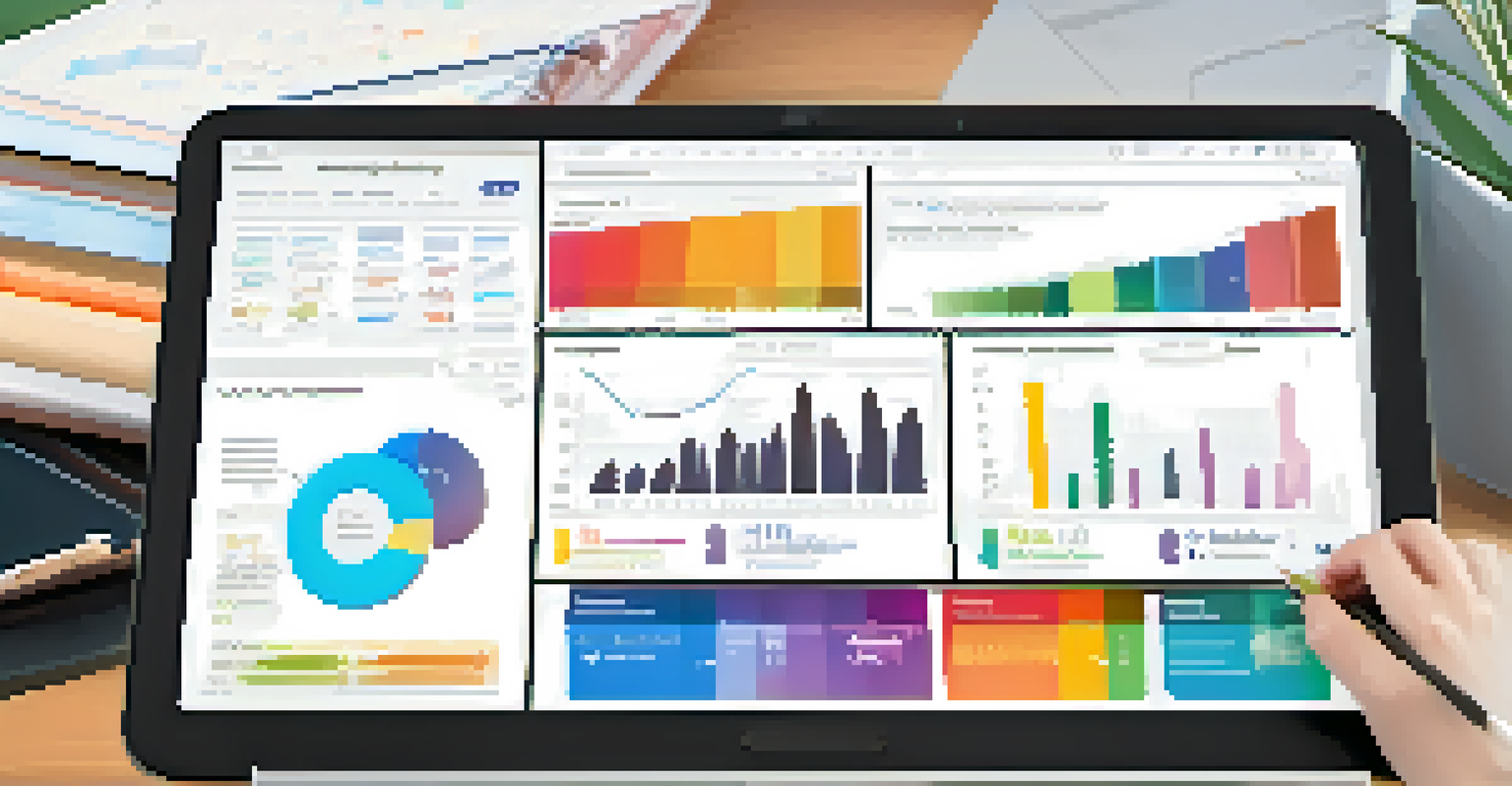The Benefits of Learning Analytics in Online Education

Understanding Learning Analytics and Its Importance
Learning analytics refers to the collection and analysis of data related to learners and their contexts. By analyzing this data, educators can gain insights into student performance, engagement levels, and learning behaviors. This understanding is crucial in tailoring educational experiences to meet individual needs.
Data is the new oil.
For instance, if a student consistently struggles with a specific topic, learning analytics can highlight this issue, prompting timely intervention. This proactive approach not only helps the student but also enhances the overall quality of the educational program. In essence, learning analytics serves as a compass guiding both students and educators toward success.
Moreover, as online education continues to grow, the relevance of learning analytics becomes even more pronounced. It provides a way to bridge the gap that can often occur in virtual environments, ensuring that no student slips through the cracks.
Personalized Learning Experiences Through Data Insights
One of the most significant benefits of learning analytics is its ability to personalize education. By leveraging data, educators can tailor content and learning paths to fit individual students' strengths and weaknesses. This personalized approach makes learning more engaging and effective.

For example, if analytics reveal that a student excels in visual learning, educators can provide more video content or interactive simulations. Such adjustments can transform the learning experience, making it more relevant and accessible. Personalization not only boosts student confidence but also fosters a deeper understanding of the material.
Personalized Learning Enhances Engagement
Learning analytics allows educators to tailor content to individual strengths, making education more engaging and effective.
Ultimately, personalized learning supported by analytics helps create a more inclusive environment, where every student has the opportunity to thrive.
Enhancing Student Engagement and Motivation
Learning analytics can significantly enhance student engagement by providing insights into their activities and interactions. By identifying which resources are most frequently accessed or which assignments are completed, educators can refine their approaches to foster greater participation. This data-driven feedback loop helps keep students motivated.
What gets measured gets managed.
For instance, if a particular module is seeing low engagement rates, educators can explore content delivery methods or adjust the curriculum to make it more appealing. Understanding what captivates students allows for a more dynamic and responsive educational environment. When students feel engaged, they are more likely to invest time and effort into their learning.
Ultimately, increased engagement leads to better learning outcomes, as students feel more connected to the educational process.
Supporting Informed Decision-Making for Educators
For educators, learning analytics provides a robust framework for making informed decisions. By analyzing student data, teachers can assess the effectiveness of their teaching strategies and modify them as necessary. This evidence-based approach leads to continuous improvement in educational practices.
For example, if analytics indicate that a specific teaching method is not yielding desired results, educators can experiment with different strategies. This iterative process not only enhances teaching effectiveness but also helps educators feel more confident in their instructional choices. Over time, such reflective practices foster a culture of excellence within educational institutions.
Early Identification of At-Risk Students
By monitoring student data, learning analytics helps educators identify at-risk students early, enabling timely support and interventions.
In essence, learning analytics empowers educators to be adaptive and responsive, ensuring that they meet the diverse needs of their students.
Identifying At-Risk Students Early On
Another crucial advantage of learning analytics is its ability to identify at-risk students early in their academic journey. By monitoring engagement patterns, assignment completion rates, and assessment scores, educators can spot warning signs before they escalate. This early detection is vital for implementing timely support and interventions.
For instance, if a student's participation drops significantly, alerts can be triggered, prompting educators to reach out and offer assistance. This proactive strategy not only helps students get back on track but can also prevent dropout rates. By addressing issues early, institutions can foster a supportive learning environment that prioritizes student success.
In short, the ability to identify at-risk students through analytics is a game-changer for online education.
Improving Overall Course Design and Delivery
Learning analytics also plays a pivotal role in enhancing course design and delivery. By analyzing data on how students interact with course materials, educators can refine their content to better suit learners' needs. This continuous feedback loop leads to courses that are not only more effective but also more enjoyable.
For example, if analytics show that students struggle with certain modules, educators can rework those sections or provide additional resources to clarify concepts. By iterating on course design based on real data, institutions can improve the learning experience for all students. This adaptability is essential in the ever-evolving landscape of online education.
Data-Driven Course Design Improvements
Analyzing student interactions with course materials helps educators refine content and improve overall course delivery.
Ultimately, effective course design and delivery grounded in learning analytics can lead to higher satisfaction rates among students.
Facilitating Collaborative Learning Opportunities
Learning analytics can also facilitate collaborative learning opportunities among students. By analyzing individual strengths and weaknesses, educators can form diverse groups that enhance peer-to-peer learning. This collaborative approach not only enriches the educational experience but also fosters a sense of community.
For instance, if analytics indicate that a student excels in analytical skills while another shines in creativity, pairing them for a project can lead to innovative outcomes. Collaboration encourages students to learn from each other, building essential skills such as teamwork and communication. Such interaction can be particularly beneficial in an online setting, where students may feel isolated.

In essence, learning analytics can transform the online learning landscape, promoting collaboration and connection among students.
Preparing Students for Future Challenges
Lastly, learning analytics equips students with the tools they need to face future challenges. By providing insights into their learning habits, students can reflect on their progress and set goals for improvement. This self-awareness is crucial for lifelong learning and personal development.
For example, if a student recognizes a pattern of procrastination through analytics, they can take proactive steps to manage their time better. This ability to self-reflect and adapt is invaluable in both academic and professional settings. Learning analytics ultimately cultivates a mindset of growth and resilience.
In conclusion, as students harness the power of learning analytics, they not only enhance their educational experience but also prepare themselves for success beyond the classroom.